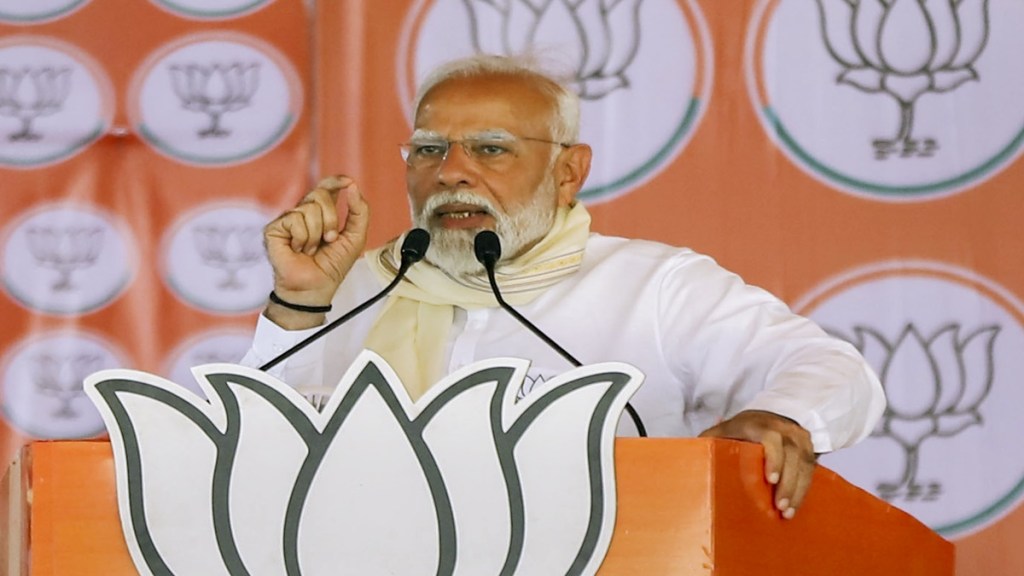The voters of India delivered a victory to Prime Minister Narendra Modi and the Bharatiya Janata Party (BJP) in the 2024 parliamentary election. Although the BJP lost a number of seats, the National Democratic Alliance (NDA) crossed the majority number needed to form a government at the Centre. The BJP also increased its vote share from 2019 in states like Kerala and Tamil Nadu. Winning in Kerala is historic not only for the BJP but also for electoral democracy in South.
The second feature of the election results is that the BJP has expanded its influence in South Indian states by breaking a stereotype of being a party of the North, especially the Hindi heartland.The BJP and NDA got an impressive numbers of seats in Andhra Pradesh and Telangana. These states have now emerged as areas of political possibility for the BJP. It may try harder to take root in states such as Andhra Pradesh and Telangana. Tamil Nadu and Kerala have usually been antithetical to BJP’s political philosophy of Hindutva, the Hindi language, etc. which are intertwined with the party’s image. These two states have also posed a counter to the Ek Bharat Shreshtha Bharat campaign of Modi and the BJP. So gaining ground there is needed for a perceptional shift. Modi worked hard to give symbolic, substantial importance to Tamil Nadu during his second tenure. His government and ministries together organised programmes to include Tamil Nadu in parts of the North. His social welfare schemes created a beneficiary community in Tamil Nadu, and before the election the PM drew admiration from people in some villages.
Third, the BJP performed extremely well in Odisha. Its rise can be attributed to four reasons. Modi’s emergence as a star attraction for the people; the issue of Odia identity raised by Modi and party leader Dharmendra Pradhan; growing interest among youths towards government schemes and aspirations for Viksit and Digital Bharat.The BJP has built a political anchor like Pradhan who organised the poll campaign on Modi’s image, Odia identity, and the dream of Viksit Bharat.
West Bengal results show that Mamata Banerjee retains her hold on the public and politics. The BJP lost an opportunity to expand in the state. It could not successfully mobilise voters against Mamata allegations of corruption that it levelled against the Trinamul Congress leader. It also failed to convert the anti-incumbency against Banerjee, and in translating Modi’s image into votes.
In North India, the BJP suffered significant losses in Haryana, Rajasthan, and especially Uttar Pradesh. In UP, it may have had to contend with incumbency of local candidates. The Indian National Developmental Inclusive Alliance (INDIA) diversified its social alliance by giving representation to non-Yadav Other Backward Castes (OBCs) and most backward communities. This was an election of images, not narratives. The narratives of both NDA and INDIA kept changing in a matter of days. The bulk of the public went in favour of Modi, showing confidence and faith in his development designs and governance model. He has acquired credibility as a doer, and not only a man of words. The inauguration of the Ram temple, abrogation of Article 370, Citizen (Amendment) Act etc. all added to his crediblity.
Also, the beneficiary factor worked for marginal communities such as Dalits, tribals, most backward castes, and women in mobilising them. The beneficiaries of welfare schemes like free ration, Ujjwala yojana, Ayushman card and direct benefit transfer was an anchor for the BJP. With the party cadre maintaining a constant connect with them, it reoriented the beneficiaries as voters. Even then, the opposition strategy of a revival of caste identity by raising social justice issues appears to have paid dividends, especially in UP. The narrative that the INDIA bloc tried to weave around the Constitution (in danger), caste census, and reservation impressed a section of OBCs and Dalit communities. Rahul Gandhi’s image also aquired greater acceptance, the results suggest.
I would conclude with three important points. First, I observed how the use of electronic voting machines (EVMs) prevented booth capture, empowering the subaltern in taking part in this festival of Indian democracy. A study by economist Shamika Ravi that analysed data shows that EVMs helped enhance the participation of women and other vulnerable sections. Secondly, in my view, Modi’s image worked as a big anchor across India and turned possible defeat of many BJP candidates into victory. Thirdly, it has cultivated a possibility of territorial as well as demographic expansion in southern India. Lastly, the BJP will likely have to respond to new challenges that the INDIA bloc has posed.
Badri Narayan, Director, G B Pant Social Science Institute, Allahabad
Views are personal

